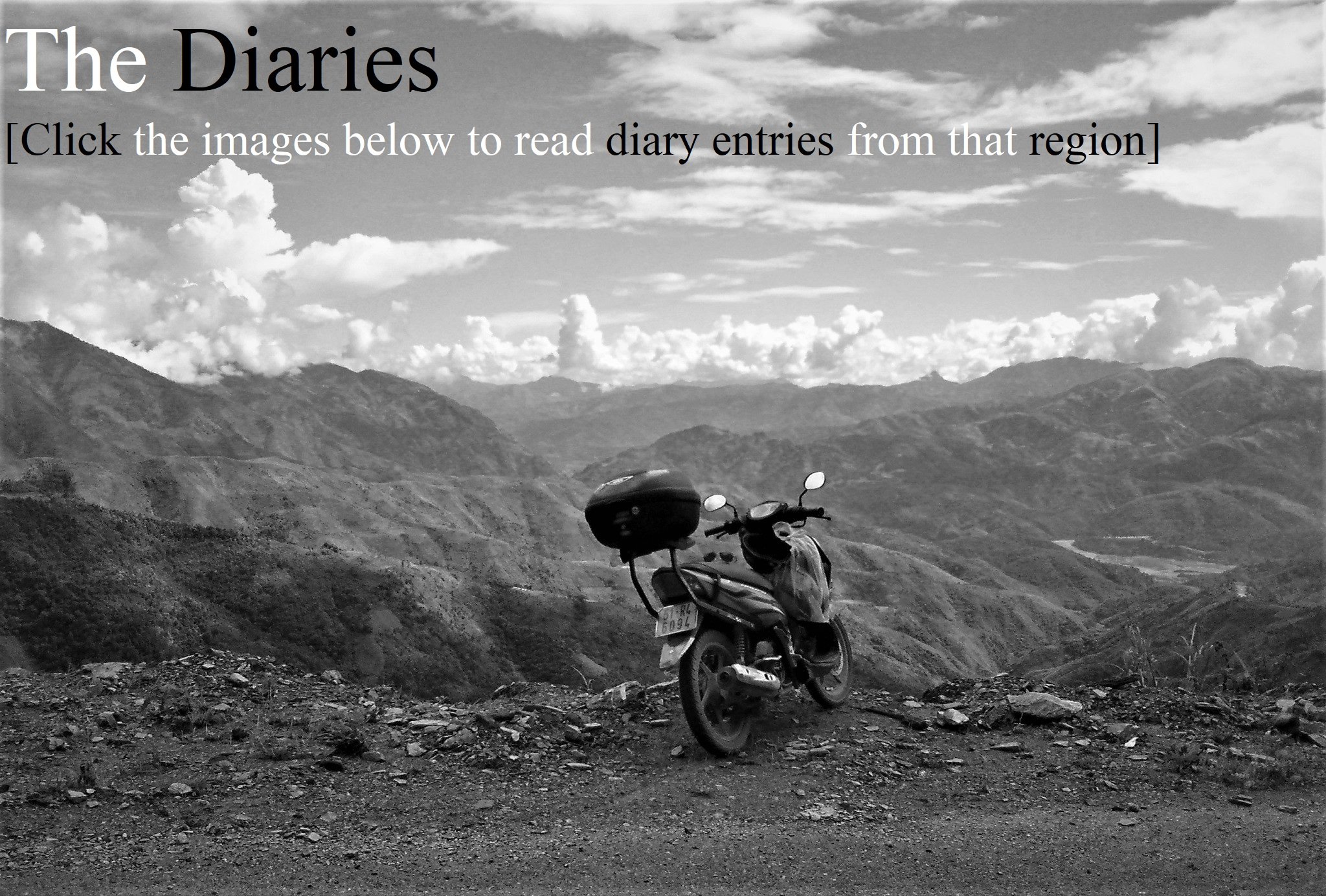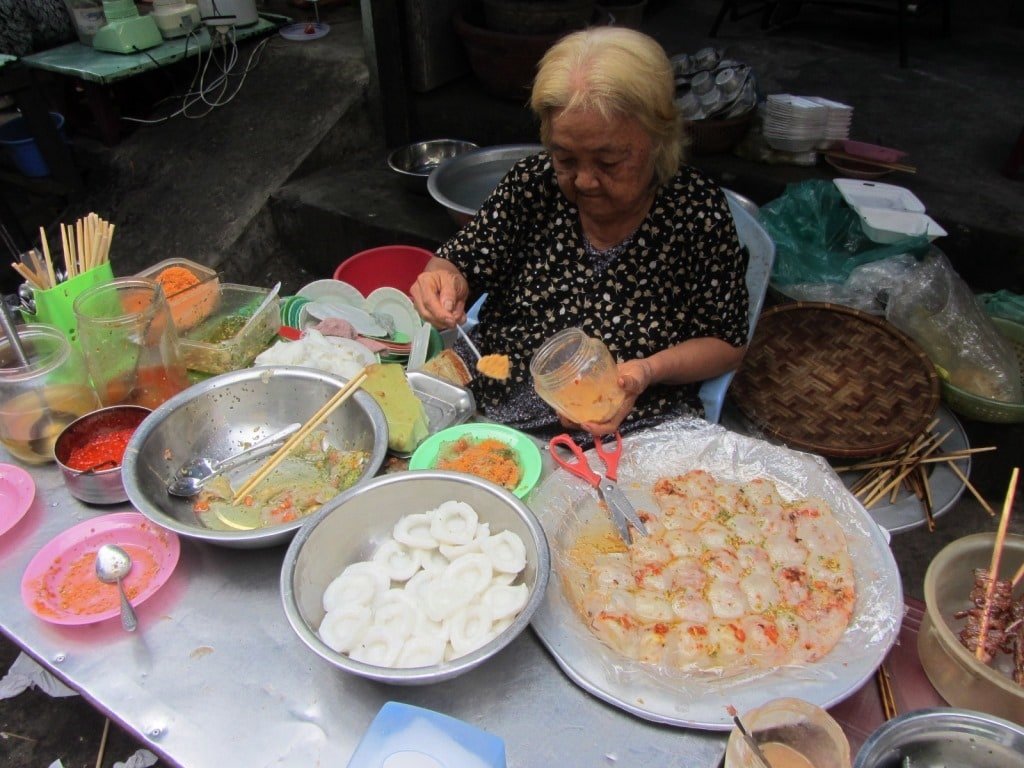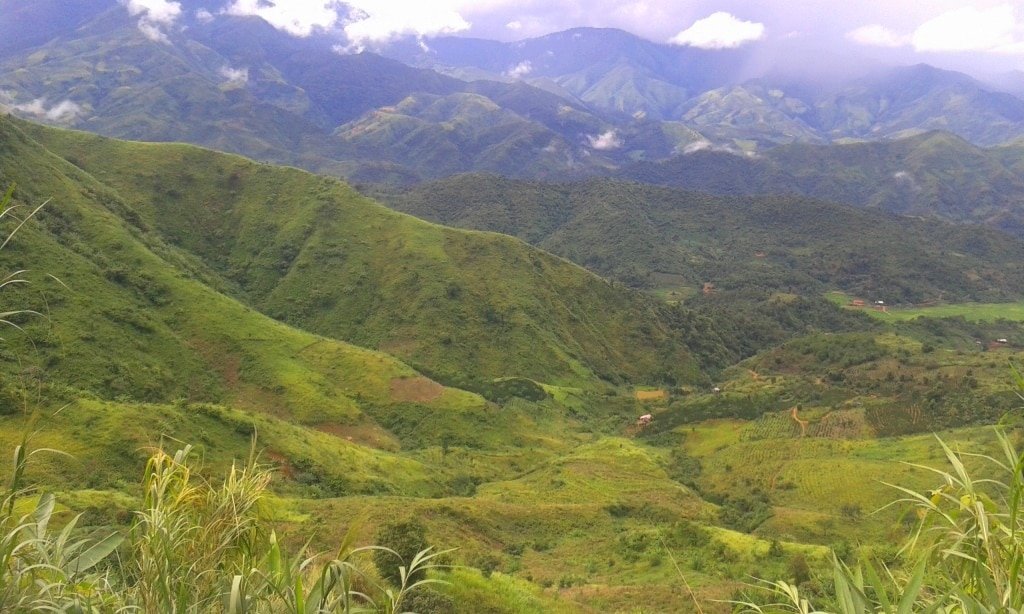Are you an adventure seeker wondering about the future of high-mountain climbing tourism in Lai Chau, Vietnam? Look no further! SIXT.VN brings you insights into the sustainability and safety of this exhilarating activity, offering a comprehensive guide for your next adventure. From breathtaking landscapes to rich cultural experiences, discover how Lai Chau is becoming a top destination for sustainable and secure mountain climbing adventures.
1. What Makes Lai Chau a Prime Location for High-Mountain Climbing Tourism?
Lai Chau stands out as a premier destination for high-mountain climbing tourism because of its stunning natural landscapes and rich cultural heritage. The region boasts some of Vietnam’s highest and most challenging peaks, attracting both amateur and professional climbers.
Lai Chau’s diverse terrain offers a variety of climbing experiences, from steep rock faces to lush, forested slopes. This variety ensures that climbers of all skill levels can find a suitable challenge. The province is also home to numerous ethnic minority groups, each with unique traditions and customs, adding a cultural dimension to the climbing experience.
The local communities are actively involved in promoting sustainable tourism, which helps preserve the natural beauty and cultural integrity of the region.
 Mountains in Lai Chau
Mountains in Lai Chau
2. How Is Sustainability Being Integrated Into High-Mountain Climbing Tourism in Lai Chau?
Sustainability is a core focus in Lai Chau’s high-mountain climbing tourism. Local authorities and tourism operators are working together to ensure that the environment is protected and that local communities benefit from tourism activities.
Eco-Friendly Practices
Eco-friendly practices include strict regulations on waste management, promoting the use of sustainable materials, and implementing responsible trekking guidelines. Climbers are encouraged to minimize their environmental impact by carrying out all trash and sticking to established trails.
Community Involvement
Community involvement is another critical aspect. Local guides and porters are employed, providing economic opportunities and ensuring that traditional knowledge is preserved. According to a report by the Vietnam National Administration of Tourism, community-based tourism initiatives in Lai Chau have significantly improved the livelihoods of local residents.
Conservation Efforts
Conservation efforts are also in place to protect the unique flora and fauna of the region. This includes supporting reforestation projects and protecting endangered species habitats.
3. What Safety Measures Are in Place to Ensure Climber Well-Being in Lai Chau?
Safety is paramount in high-mountain climbing tourism in Lai Chau. Various measures are in place to ensure the well-being of climbers, minimizing risks and providing assistance in case of emergencies.
Certified Guides
Certified guides are essential for safe climbing experiences. These guides have extensive knowledge of the local terrain, weather conditions, and potential hazards. They are trained in first aid and emergency response, ensuring that climbers are in capable hands.
Route Management
Route management involves the careful planning and maintenance of climbing routes. This includes assessing the stability of rock faces, marking trails clearly, and providing necessary equipment such as ropes and anchors. Regular inspections are conducted to identify and mitigate potential risks.
Emergency Protocols
Emergency protocols are well-defined and practiced. Rescue teams are on standby, equipped with the necessary gear to respond to emergencies quickly and efficiently. Communication systems are in place to ensure that climbers can contact authorities in case of need.
SIXT.VN partners with reputable local operators who prioritize safety.
4. What Role Does Technology Play in Enhancing Safety and Sustainability in Lai Chau’s Climbing Tourism?
Technology plays a significant role in advancing both safety and sustainability in high-mountain climbing tourism in Lai Chau. Advanced tools and systems help to monitor conditions, improve communication, and minimize environmental impact.
GPS Tracking
GPS tracking enables climbers to navigate accurately and stay on designated trails, reducing the risk of getting lost and minimizing damage to sensitive areas. It also allows rescue teams to locate climbers quickly in case of emergencies.
Weather Monitoring
Real-time weather monitoring systems provide crucial information about changing conditions, allowing climbers to make informed decisions about their activities and avoid hazardous situations. This data also helps to predict potential environmental impacts, such as landslides or floods.
Communication Devices
Satellite phones and other communication devices ensure that climbers can stay connected with the outside world, even in remote areas. This is vital for reporting emergencies and coordinating rescue efforts.
Online Platforms
Online platforms offer resources such as travel planning, booking, and information sharing, making it easier for travelers to engage in responsible and sustainable tourism practices.
5. How Are Local Communities Benefiting Economically From High-Mountain Climbing Tourism?
High-mountain climbing tourism provides significant economic benefits to local communities in Lai Chau. By actively participating in the tourism industry, residents can improve their livelihoods and preserve their cultural heritage.
Employment
Employment opportunities abound for local guides, porters, cooks, and accommodation providers. These jobs offer a stable income and improve the overall economic well-being of the community. According to a study by the Vietnam Institute of Economics, tourism-related employment has reduced poverty rates in Lai Chau.
Income
Income generation through handicrafts and souvenirs also contributes to the local economy. Tourists are encouraged to purchase locally made products, supporting traditional crafts and providing an additional source of income for artisans.
Investment
Investment in local infrastructure, such as roads and accommodations, improves the quality of life for residents and enhances the tourism experience. These developments also create new business opportunities and stimulate economic growth.
Cultural Preservation
Cultural preservation through tourism helps to maintain traditional practices and customs. Local communities are motivated to preserve their heritage, knowing that it attracts tourists and generates income.
SIXT.VN ensures that its operations contribute to local economic growth by partnering with local businesses and promoting responsible tourism practices.
6. What Challenges Does High-Mountain Climbing Tourism Pose to Lai Chau, and How Are They Being Addressed?
Despite the many benefits, high-mountain climbing tourism also presents challenges to Lai Chau. Addressing these issues is essential for ensuring the long-term sustainability and responsible growth of the industry.
Environmental Degradation
Environmental degradation, such as trail erosion and waste accumulation, is a significant concern. To combat this, authorities are implementing stricter regulations on trail usage, promoting responsible waste disposal, and investing in trail maintenance and restoration.
Cultural Impact
Cultural impact, including the potential loss of traditional values and customs, is another challenge. Engaging local communities in tourism planning, promoting cultural awareness among tourists, and supporting cultural preservation initiatives help to mitigate these effects.
Safety Risks
Safety risks, such as accidents and medical emergencies, require robust protocols and preparedness. Training local guides in first aid and emergency response, establishing effective communication systems, and maintaining well-equipped rescue teams are crucial for minimizing these risks.
Infrastructure Limitations
Infrastructure limitations, including inadequate roads and accommodations, can hinder the growth of tourism. Investing in infrastructure development, improving accessibility, and promoting sustainable construction practices address these constraints.
SIXT.VN works closely with local authorities and community organizations to address these challenges and promote responsible tourism practices.
 Local Market in Lai Chau
Local Market in Lai Chau
7. What Are the Most Popular Climbing Routes and Peaks in Lai Chau?
Lai Chau offers several popular climbing routes and peaks that attract adventurers from around the world. These routes vary in difficulty, offering options for climbers of all skill levels.
Fansipan Peak
Fansipan Peak, while technically in Lao Cai province bordering Lai Chau, is often accessed and considered part of the climbing experience in the region. As the highest peak in Indochina, conquering Fansipan is a significant achievement for climbers. The route involves trekking through dense forests and challenging terrains, rewarding climbers with breathtaking views from the summit.
Pu Ta Leng
Pu Ta Leng is another prominent peak in Lai Chau, known for its rugged terrain and stunning natural beauty. Climbing Pu Ta Leng requires technical skills and physical endurance, making it a favorite among experienced climbers. The route passes through diverse ecosystems, including cloud forests and alpine meadows.
Bach Moc Luong Tu
Bach Moc Luong Tu offers a more moderate climbing experience, suitable for climbers with intermediate skills. The route is characterized by its scenic trails, lush valleys, and panoramic views of the surrounding mountains.
Mount Ky Quan San
Mount Ky Quan San is a challenging climb that requires excellent physical fitness and experience. Climbers are rewarded with stunning views of the surrounding landscape, including the Hoang Lien Son mountain range.
SIXT.VN provides detailed information and support for exploring these popular climbing routes, ensuring a safe and memorable adventure.
8. How Can Climbers Contribute to the Sustainability and Safety of High-Mountain Tourism in Lai Chau?
Climbers play a vital role in promoting sustainability and safety in high-mountain tourism in Lai Chau. By adopting responsible practices and respecting local guidelines, they can help minimize their impact and ensure the well-being of themselves and others.
Minimize Waste
Minimize waste by carrying out all trash, using reusable containers, and avoiding single-use plastics. Dispose of waste properly in designated areas.
Stay on Marked Trails
Stay on marked trails to avoid damaging sensitive ecosystems and prevent erosion. Respect trail closures and follow established routes.
Support Local Businesses
Support local businesses by hiring local guides and porters, purchasing locally made products, and staying in community-run accommodations.
Respect Local Culture
Respect local culture by dressing appropriately, asking permission before taking photos, and observing local customs and traditions.
Follow Safety Guidelines
Follow safety guidelines by hiring certified guides, carrying necessary equipment, and informing authorities of your climbing plans. Stay updated on weather conditions and heed warnings from local guides.
Educate Others
Educate others about responsible climbing practices and encourage fellow climbers to adopt sustainable behaviors.
9. What Future Developments Are Planned to Enhance High-Mountain Climbing Tourism in Lai Chau?
Future developments are aimed at enhancing the experience for high-mountain climbing tourists while promoting sustainability and safety. These initiatives include infrastructure improvements, new tourism products, and community development projects.
Improved Infrastructure
Improved infrastructure involves upgrading roads, trails, and accommodations to enhance accessibility and comfort. Sustainable construction practices and eco-friendly materials are prioritized to minimize environmental impact.
Expanded Tourism Products
Expanded tourism products include new climbing routes, guided tours, and cultural experiences that showcase the region’s natural beauty and rich heritage. These offerings cater to a diverse range of interests and skill levels.
Community Development
Community development projects are focused on improving the livelihoods of local residents through education, training, and access to resources. These initiatives empower communities to participate actively in the tourism industry and benefit from its growth.
Promotion Of Responsible Tourism
Promotion of responsible tourism through awareness campaigns and educational programs aims to encourage sustainable practices among tourists and local communities. This includes promoting waste reduction, energy conservation, and respect for local culture.
SIXT.VN is committed to supporting these future developments, ensuring that high-mountain climbing tourism in Lai Chau continues to thrive responsibly.
 Climber on Mountain Trail in Lai Chau
Climber on Mountain Trail in Lai Chau
10. Where Can I Find Reliable Information and Book Services for High-Mountain Climbing in Lai Chau?
Finding reliable information and booking services for high-mountain climbing in Lai Chau is essential for a safe and enjoyable experience. SIXT.VN offers a range of resources and services to help you plan and book your adventure.
SIXT.VN Website
SIXT.VN website provides detailed information about climbing routes, safety guidelines, and sustainability practices. You can also find listings for certified guides, accommodation providers, and tour operators.
Vietnam National Administration of Tourism
Vietnam National Administration of Tourism offers resources, guidelines, and directories of certified tourism operators.
Lai Chau Tourism Department
Lai Chau Tourism Department provides local insights, regulations, and contact information for tourism-related services.
Travel Forums and Communities
Travel forums and communities offer valuable tips, reviews, and recommendations from experienced climbers. These platforms can help you connect with other adventurers and gather firsthand information.
Contact Information
For personalized assistance, you can contact SIXT.VN directly:
- Address: 260 Cau Giay, Hanoi, Vietnam
- Hotline/WhatsApp: +84 986 244 358
- Website: SIXT.VN
High-mountain climbing tourism in Lai Chau holds a promising future, with a strong emphasis on sustainability, safety, and community involvement. By understanding the opportunities and challenges, and by adopting responsible practices, climbers can contribute to the responsible growth of this exhilarating activity, ensuring that Lai Chau remains a premier destination for adventure seekers for generations to come. Contact SIXT.VN today to plan your unforgettable journey!
FAQ: High-Mountain Climbing in Lai Chau
1. What is the best time to visit Lai Chau for high-mountain climbing?
The best time to visit Lai Chau for high-mountain climbing is during the dry season, which typically runs from October to April. During these months, the weather is more stable, with clear skies and less rainfall, making for safer and more enjoyable climbing conditions.
2. Do I need a permit to climb in Lai Chau?
Yes, you typically need a permit to climb in Lai Chau, particularly for certain peaks and protected areas. It is best to check with local authorities or your tour operator, like SIXT.VN, to ensure that you have the necessary permits before embarking on your climb.
3. Are there any specific gears and equipment I need for high-mountain climbing in Lai Chau?
Yes, specific gears and equipment are essential for high-mountain climbing in Lai Chau. Essential items include sturdy climbing boots, appropriate clothing for varying weather conditions (including rain gear), a reliable backpack, a first aid kit, a GPS device, and climbing ropes and harnesses for technical routes.
4. Are there any altitude sickness precautions I should take?
Yes, altitude sickness can be a concern when climbing in Lai Chau. It’s essential to ascend gradually, stay hydrated, avoid alcohol and smoking, and be aware of the symptoms of altitude sickness, such as headache, nausea, and dizziness. If symptoms occur, descend to a lower altitude immediately.
5. What is the level of physical fitness required for high-mountain climbing in Lai Chau?
High-mountain climbing in Lai Chau requires a high level of physical fitness. Climbers should have experience in trekking and climbing, as well as excellent cardiovascular fitness and strength. Regular exercise and training before your trip are highly recommended.
6. Are there any recommended vaccinations for traveling to Lai Chau?
Yes, it is recommended to consult with your doctor or a travel health clinic before traveling to Lai Chau to ensure that you have all the necessary vaccinations. Common recommendations include vaccinations for hepatitis A and B, typhoid, and Japanese encephalitis.
7. Can I hire a porter in Lai Chau?
Yes, you can hire local porters in Lai Chau. This is a great way to support the local economy and lighten your load during your climb. SIXT.VN can assist you in arranging for a reliable porter.
8. What is the typical cost of a high-mountain climbing tour in Lai Chau?
The cost of a high-mountain climbing tour in Lai Chau can vary depending on the duration of the tour, the difficulty of the climb, and the services included. Typically, you can expect to pay anywhere from $500 to $1500 or more for a multi-day climbing tour. Contact SIXT.VN for detailed pricing information.
9. Is it safe to drink the water in Lai Chau?
No, it is generally not safe to drink tap water in Lai Chau. It is recommended to drink bottled water or use a water purifier.
10. Are there any cultural norms I should be aware of when interacting with the local communities in Lai Chau?
Yes, there are several cultural norms to be aware of when interacting with local communities in Lai Chau. It’s important to dress modestly, ask for permission before taking photos, and show respect for local customs and traditions. Learning a few basic Vietnamese phrases can also go a long way in building rapport with the local people.



